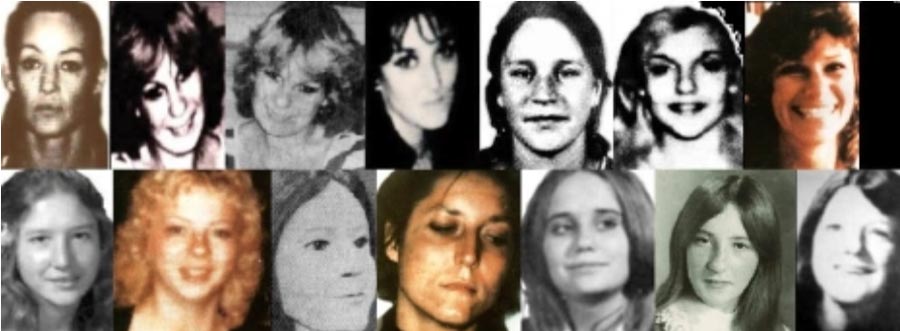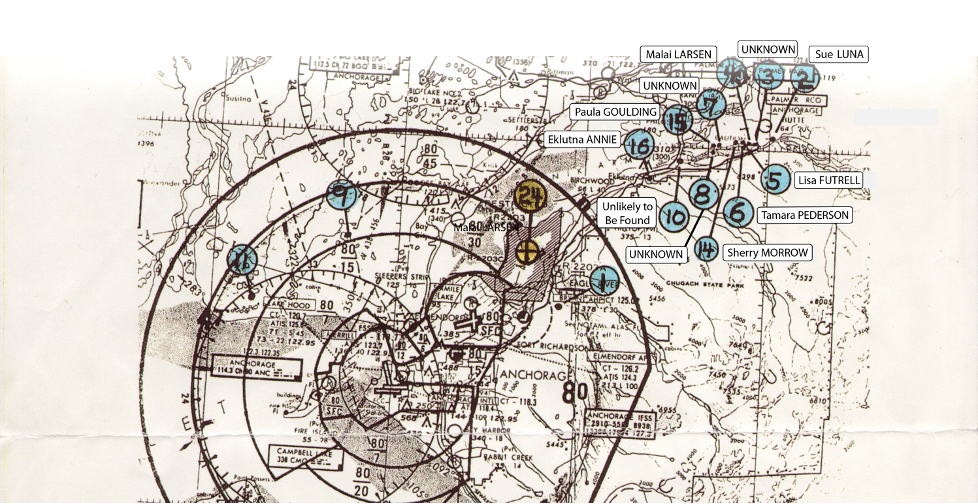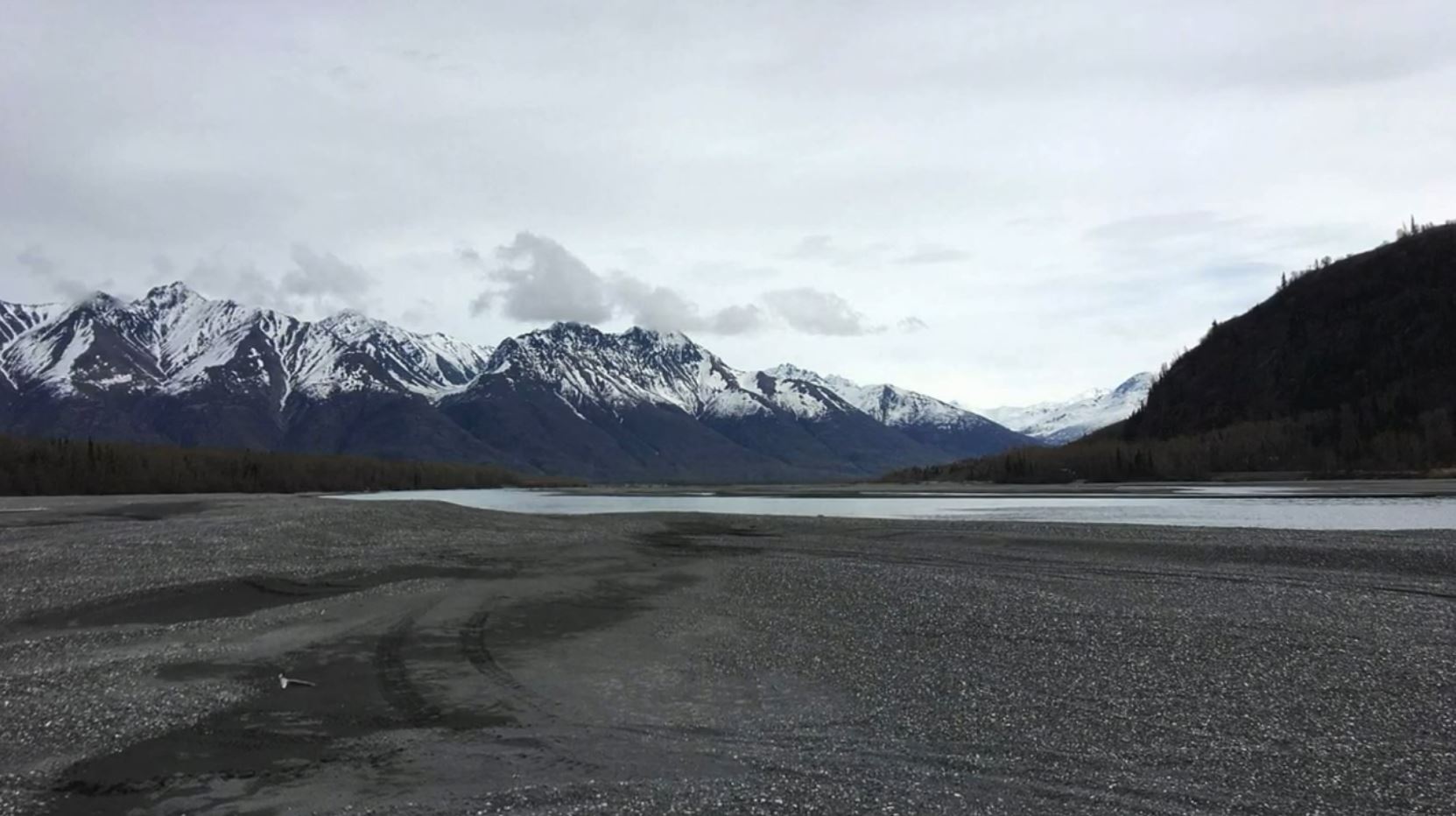ONE of the world’s most brutal serial killer’s dubbed the “Butcher Baker” used the Alaskan Bush as his “ultimate weapon” during an 11-year killing spree, an expert has said.
Robert Hansen was a respected husband and father to those who knew him but a twisted lust for young women unearthed a hidden monster beneath.
At least 17 women were brutally murdered between 1971-1983 in Anchorage, Alaska’s largest city, although authorities suspect Hansen had more than thirty victims.
When kidnapping, raping and torturing his victims still wasn’t enough, he would use his trusty Ruger Mini-14 semi-automatic rifle and Hunting Knife to finish the job.
But what Hansen thrived off was mother nature itself, using the Alaskan wilderness, commonly known as the Bush, to conduct his meticulously planned and thought out murders.
American author Leland Hale, who co-wrote the book ‘Butcher, Baker: The True Account of an Alaskan Serial Killer’, said Hansen used the region as his “ultimate weapon”.
Read more on Serial Killers
Speaking exclusively to The Sun, he said: “I say this a lot about Hansen and this is my cliche of him, but he used the Alaskan Bush as his ultimate weapon.
“Almost anywhere in Anchorage, you can walk five miles and be in the Bush. Mother Nature is right there.
“Alaska is not a population-dense place, it’s very isolated and Hansen used that.
“He knew it was somewhere he could not be bothered.”
Hansen also had plenty of strategy to his game, picking his time to prey on women.
An experienced hunter, he knew the area by heart and would only take women to the wilderness in the off-season, when no one else would be around.
“Their bodies wouldn’t be found until September when the hunters came back,” Hale said.
The Butcher Baker, a nickname derived from owning his own bakery, stalked Alaska’s sex workers and exotic dancers.
His earliest victims were girls or young women, usually between the ages of 16 and 19, who he would kidnap, rape and attack before setting free.
But as time went on, particularly in the final few years prior to his capture, Hansen began murdering his victims.
Hansen would fly them in his plane to a remote area of the Bush, convincing them he had a “cabin” on an “island” along the Knik River.
But when they landed and the women realised there was, in fact, no cabin, they would panic and flee into the wilderness, running in any direction they could.
“That’s where this escalation in violence started,” Hale said. “Once he started flying them to the Knik, these women couldn’t escape.”
“All of these women wanted to live, some of them fought back, but it was a sure way to get killed.
“None of them could really run fast enough, either, especially if they’re up in the Bush or the Knik River.
“Even though the river is not that long, it’s vast, and there’s a lot of gravel beds, scrub bushes, willow… so he’s going to find you and he’s going to get you.”
When bodies were found scattered throughout the Bush and far from where Hansen landed his plane, theories soon circulated that maybe he had, in fact, hunted these women.
And after authorities found a map in his home marked with tiny “X” symbols showing the locations of where he murdered and buried his victims, it was even more reason to believe he had conducted a sick game.
The twisted serial killer appeared to have found his new thrill – and no one could stop him.
“He knew that area quite well and once he had the plane, his access to it grew exponentially,” Hale said.
“When the women began to figure out what was going on, they panicked and ran.
“They then found these women quite a long way from where he had to land his plane. so maybe he did release them as one last thrill.”
Hale claims that Hansen’s crimes stemmed from a need to dominate women “physically and sexually”.
But in the latter stages of his killing spree, Hansen “lost his sexual urge” and solely focused on murder – a significant point of no return.
“As time went on, it became more and more apparent that he lost the sexual urge and started killing,” Hale told The Sun.
“If you want to measure it by the ‘high’, think of it as this scale of ever escalating thrills and adrenaline.
Hansen’s downfall

HANSEN was eventually arrested in 1983 after authorities secured a warrant to search his plane, vehicles and home.
Detective Glenn Flothe of the Alaska State Troopers tracked him down after he matched an offender profile created by FBI Special Agent John Douglas.
Douglas determined the killer would be an experienced hunter with low self-esteem, have a history of being rejected by women, and would feel compelled to keep “souvenirs” of his murders, such as a victim’s jewellery.
He also believed the assailant would stutter.
Hansen was sentenced to 461 years’ imprisonment without the possibility of parole.
When confronted with the evidence found in his home, Hansen denied it as for long as he could, before eventually blaming the women to try and justify his actions.
He pleaded guilty to the four homicides the police had evidence for and provided details about his other victims in return for serving his sentence in a federal prison, along with no publicity in the press.
He was first imprisoned at the United States Penitentiary in Lewisburg, Pennsylvania, but returned to Alaska In 1988 and was briefly incarcerated at Lemon Creek Correctional Center in Juneau.
He was also imprisoned at Spring Creek Correctional Center in Seward until May 2014, when he was transported to the Anchorage Correctional Complex for health reasons.
Hansen died on August 21, 2014, of natural causes, aged 75, at Alaska Regional Hospital in Anchorage.
“He associated this thrill of doing something illegal and getting away with it as this sort of sexual high.
“It was about dominating them, being able to kidnap them, and planning it all out.”
The stretch of land along the Knik River became Hansen’s “ideal” killing fields for several reasons – chief among them its proximity to Anchorage, coupled with its relative isolation.
But while some victims were found with gunshot wounds, others had been stabbed.
“The knife is such a personal weapon, it’s destroying someone with pure hatred,” Hale said.
“His very first killing is with a knife, where he stabs her in the back with her face down in the gravel.
“But was it a callback, bringing the knife back into it? It certainly came full circle.”
Killing his victims was a way of removing the evidence – but it was an act he became obsessed with.
“Absolutely at the end, the walls are closing in and he has to get rid of these women because if they come back, he knows it’s all over,” said Hale.
“But because he’s so obsessive, he can’t stop.
All of these women wanted to live, some of them even fought back, but it was a sure way to get killed
Leland E. Hale
“He can’t keep them, he can’t send them back, so the only thing he could do was eliminate them.”
Hansen was married twice, with his first wife divorcing him after he was arrested for arson in 1960, while his second wife, with whom he had two children, left him following his eventual arrest in 1983.
But despite his violent behaviour and mass murdering spree, he never laid a finger on either woman.
“There’s this thing called the Madonna–whore complex, where there are things he would not do sexually with a good woman,” Hale explained.
“He wouldn’t ask his wife to do certain things because he put her on a pedestal.
“He saw the sex workers beneath him, so he would do anything with them.
“As time went on, he became more vulnerable with his relationships with the sex workers because women going missing was plastered all over the news.
“But he didn’t want to stop and he couldn’t stop because of his compulsive behaviour, he’d become obsessed.”
One of Hansen’s most famous victims is Cindy Paulson, who was 17 at the time of her kidnapping and one of the few who managed to escape.
Before trying to fly her out to the Bush, Hansen chained her by the neck to a post in his basement while he took a nap on his sofa.
Who was Robert Hansen charged with murdering?

BETWEEN 1972 and 1983, Hansen abducted, raped and murdered at least 17 women, ranging in age from 16 to 41.
While authorities suspect the number of victims was closer to 21, Hansen was only charged with the murders of four.
Sherry Morrow
Topless dancer Sherry Morrow was just 23 when she was promised $300 for nude images on November 17, 1981. She was never seen again.
Almost one year later, hunters found her remains in a shallow grave on the banks of the Knik River, where she had been shot in the back three times.
However, with no bullet holes found in her clothes, it was suggested she was shot when she was naked, and redressed after.
Joanna Messina
Joanna Messina, another local topless dancer, disappeared on May 19, 1980, after Hansen took her out to dinner.
After refusing to pay her for sex, he drover Messina, 24, and her dog to a distant place before shooting them both, before dumping her body in a gravel pit.
Unfortunately, her body was badly decomposed by the time cops found it on July 8, 1980, and there was little evidence to be found.
Eklutna Annie
Eklutna Annie is the name given to an unidentified murder victim whose body was discovered by building workers in a wooded area on July 21, 1980.
Hansen claimed she was his first murder victim and admitted to stabbing her in the back after she tried to flee from his car.
Due to the state of her body, she has never been identified and was named after the area in which her grave was found in Eklutna.
Paula Goulding
In almost identical fashion to Sherry Morrow, topless dancer Paula Golding is also believed to have been dressed after she was murdered.
Golding, 30, was found with gunshot wounds in her back, having attempted to flee Hansen’s clutches before he pulled out his gun on her.
Hansen had offered her money before kidnapping her on April 25, 1983, and her body was discovered in a shallow grave on the Knik River almost five months later.
After a terrifying night of being raped and tied up, Hansen said they were going to hop on his small plane and go to a cabin in the woods, telling her he’d taken seven other women there before.
That’s when Paulson said she knew he would kill her if they went there.
When they eventually got to the plane, Paulson managed to sneak out the back of his car as he was loading up the aircraft, running to safety and flagging down a truck driver who drove her away.
One victim who wasn’t so lucky was ‘Eklutna Annie’, a girl named after the area she was found in because she was unidentifiable by the time cops found her a year later.
To this day, no one knows who she is, but her murder was a “precipitating” moment that would make Hansen an obsessive murderer.
Hansen ended up stabbing her in the back following a scuffle between the pair after she pulled a knife out on him.
Hale describes this moment as one that “broke the dam” on murder for Hansen.
Hale has covered Hansen’s story for more than two decades, interviewing investigating officers on the case such as Sergeant Glenn Flothe.
The now-retired Alaskan state trooper was instrumental in Hansen’s 1984 capture, securing a warrant to search his plane, vehicles and home after he fit the profile of possible suspects.
In his interview with Hale on May 11, 1985, Sgt. Flothe said he believed Hansen’s crimes were based off a “hatred” for women.
“I think he felt he wanted to take what he couldn’t have when he was younger and he wanted to take what he felt he had a right to – and that was women,” he said.
“He wanted to dominate them, he wanted to use them, he wanted to feel power around them — so in a way, I think it was getting back at women.”
Having seen the way he preyed on women, stalked them, raped them and killed them, Flothe concluded that Hansen “was like an animal that’s tasted blood”.
“It was simply the hate and the thrill of the chase, the hunt and the capture and the kill. Simple as that,” he told Hale in 1985.
“And he was like an animal that’s tasted blood. He couldn’t stop.”
Hansen was eventually apprehended in 1983 following 11 years of abduction, rape and murder.
He was sentenced to 461 years’ imprisonment without the possibility of parole and died in 2014 of natural causes, aged 75.
Despite showing investigators 17 grave sites, there remain marks on his map that he refused to give up, meaning at least three bodies have never been found.
The remains of 12 of a probable 21 to 37 victims were exhumed by police and returned to their families.
The story of Hansen’s horrific 12-year killing spree later became the subject of the 2013 movie The Frozen Ground, based off Hale’s book – ‘Butcher, Baker’.
Who were Robert Hansen’s other victims?

ROBERT Hansen was only charged with the murders of four women but there were multiple known victims.
Cindy Paulson, 17
Paulson is a rare survivor of Hansen’s attacks and managed to escape his clutches after he left her alone in the back of his car.
Celia Beth van Zanten, 18
Van Zanten was abducted on her way to a supermarket and found in a ravine on Christmas Day, 1971, with her chest sliced open and hands bound.
Megan Siobhan Emerick, 17
While he never confessed to her murder, Hansen is thought to be responsible for the murder of boarding school student Emerick due to an “x” on his aircraft map in the Seward region.
Mary Kathleen Thill, 22
As with Emerick, Hansen refused to confess to Thill’s murder but an “x” on his aviation chart in the vicinity of her disappearance increased suspicions about him.
Roxane Easland, 24
Easland was scheduled to meet an unnamed man on June 28, 1980 but never returned and, although Hansen admitted to killing her, the body was never found.
Lisa Futrell, 41
Futrell was kidnapped by Hansen on September 6, 1980 but it wasn’t until May 9, 1984, that her body was discovered buried next to a gravel pit.
Andrea Mona “Fish” Altiery, 24
Altiery was blindfolded, handcuffed and sexually abused before Hansen shot her, tied her to a weighted duffel bag and threw her off a bridge On December 2, 1981.
Sue Luna, 23
Luna met Hansen in a diner parking lot on May 26, 1982 before she was abducted and killed before being buried in the Knik River, where she wasn’t discovered until April 24, 1984.
Robin Pelkey, 19
It was unknown if Pelkey was involved in sex work but it was determined she was stabbed and shot after her partial remains were found on April 25, 1984.
DeLynne “Sugar” Renee Frey, 22
Frey was abducted and killed by Hansen in March 1983 but her body wasn’t discovered until August 20, 1985, when a pilot was trying out new tires on a sandbar along the Knik River.
Malai Larsen, 28
Not much is known about Larsen but the dancer was reported missing on July 10, 1981, before her body was discovered in a parking lot close to the Knik Arm Bridge on April 24, 1984.
Teresa Watson, 22
Watson was abducted and murdered by Hansen on March 25, 1983 and was discovered on May 17, 1984, although the ground was too frozen to bury her so he left her where she died.
Angela Lynn Feddern, 24
Feddern was kidnapped and murdered by Hansen in February 1983 but wasn’t found until April 1984 wen her body was located on a small lake.
Tamera “Tami” Pederson, 20
Pederson was kidnapped and murdered by Hansen after he offered her money to pose for photographs, but it wasn’t until he pointed out the location of her body on a map two years later that she was found.











